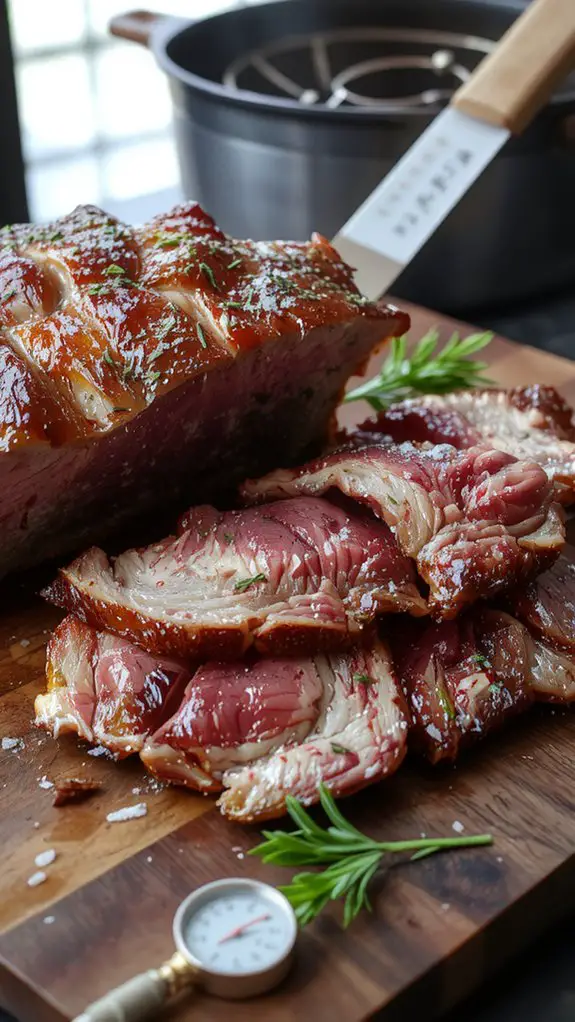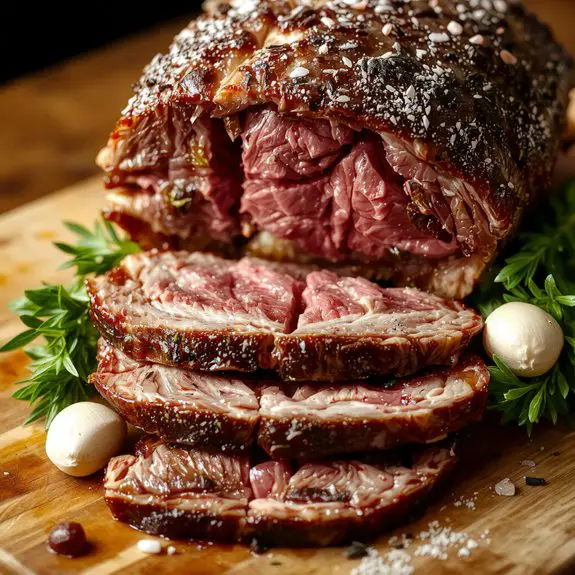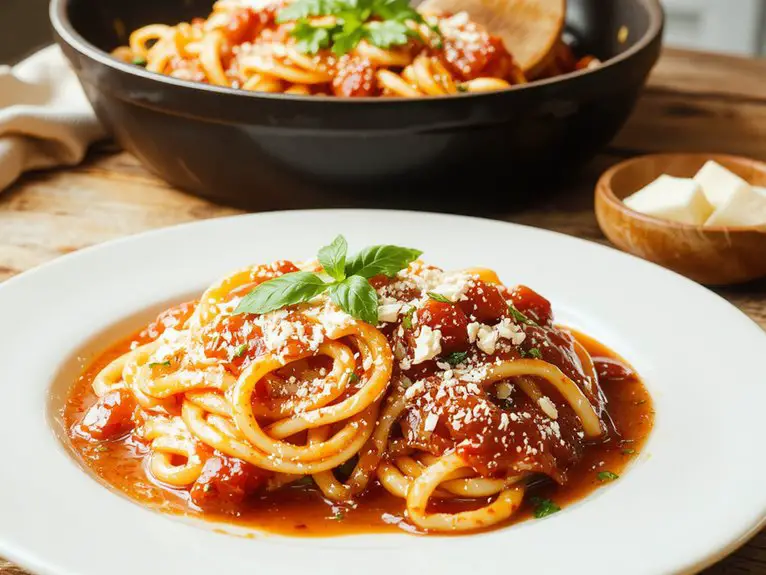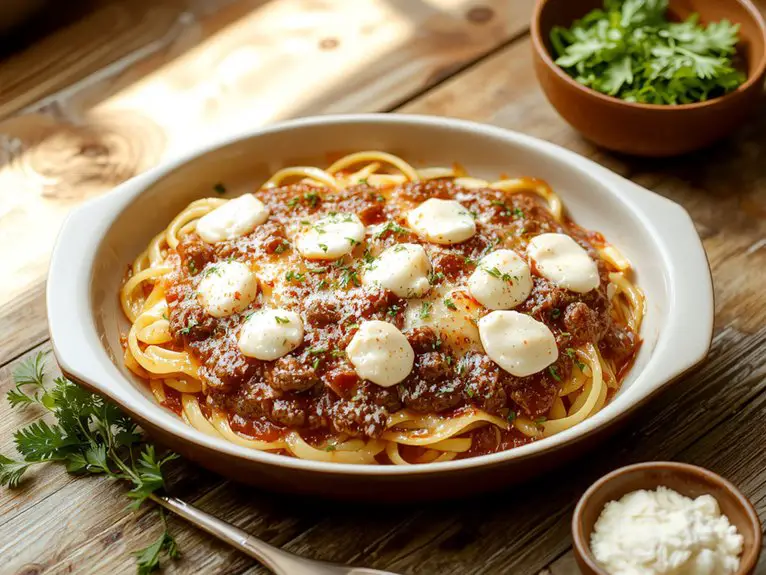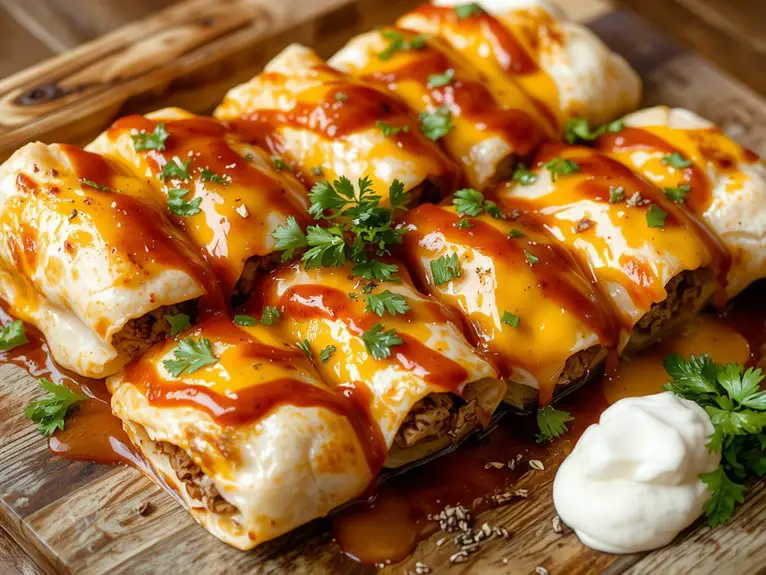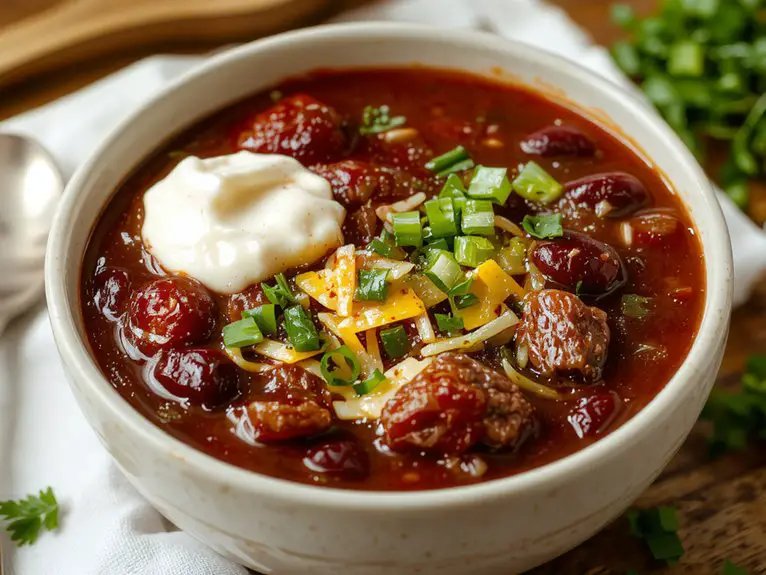Recipe
There’s nothing quite like a homemade prime rib—juicy, tender, and packed with flavor that’ll make you feel like you’ve mastered the art of fine dining in your own kitchen.
This recipe is a game-changer, and I’m not just saying that—it’s foolproof, impressive, and guaranteed to wow anyone lucky enough to sit at your table.
What sets it apart? A simple herb and garlic rub that locks in moisture while creating a golden, savory crust that’s pure perfection.
Trust me, once you slice into that melt-in-your-mouth, medium-rare center, you’ll understand why it’s worth every minute of prep.
Plus, it’s easier than you think—no fancy techniques, just good ingredients and patience.
This is the kind of dish that turns a regular dinner into a celebration.
Ready to make the best prime rib of your life? Let’s do this.
Ingredients
For a prime rib that’s juicy, flavorful, and worthy of a special occasion, the right ingredients make all the difference. Opt for high-quality cuts and fresh seasonings—this isn’t the time to cut corners. Here’s what you’ll need:
Prime Rib Roast
- Bone-in rib roast (4–7 lbs) – The bones add flavor and help insulate the meat for even cooking. Ask your butcher for a “standing rib roast” for the best results.
- Kosher salt – Coarse salt creates a perfect crust. Skip table salt—it’s too fine and can over-season.
Seasoning Rub
- Freshly ground black pepper – Pre-ground lacks punch; grind it fresh for maximum aroma.
- Garlic powder – Melds into the crust without burning like fresh garlic might.
- Rosemary & thyme (fresh or dried) – Fresh herbs are ideal, but dried works in a pinch (use half the amount).
- Olive oil or softened butter – Helps the rub adhere and promotes browning. Butter adds richness, while oil is more neutral.
Optional Upgrades
- Red wine or beef stock – Deglazes the pan for a quick, flavorful jus.
- Horseradish sauce – A classic pairing for serving (mix prepared horseradish with sour cream and a dash of lemon).
Pro Tips:
- Fat cap = flavor. Don’t trim it all off—it bastes the meat as it cooks.
- Room-temperature roast. Take the meat out of the fridge 2–3 hours before cooking for even doneness.
- No meat thermometer? Use the “finger test” or invest in one—guessing doneness is risky with a pricey cut.
Skip the pre-seasoned roasts; controlling the salt and spices yourself guarantees a balanced flavor. If you can’t find prime-grade beef, choice-grade works (just avoid select—it’s too lean).
How to Make the Best Perfect Prime Rib Techniques

- Preheat your oven to 500°F (260°C). This high initial temperature guarantees a beautifully browned crust. Place the prime rib on a rack in a roasting pan with the fat side up, as this allows the fat to baste the meat during cooking.
- Generously season the prime rib with salt, pepper, and any preferred herbs or spices. Use a coarse salt for better adherence and flavor penetration.
- Patting the meat dry before seasoning helps the seasoning stick and improves browning.
- Roast the prime rib at 500°F (260°C) for 15 minutes to sear the exterior. This step locks in juices and creates a flavorful crust.
- After this initial blast, reduce the oven temperature to 325°F (163°C) for the remainder of the cooking process.
- Cook until the internal temperature reaches your desired doneness. Use a meat thermometer for accuracy: 120°F (49°C) for rare, 130°F (54°C) for medium-rare, or 140°F (60°C) for medium.
- Insert the thermometer into the thickest part of the meat, avoiding the bone.
- Let the prime rib rest for at least 15–20 minutes before carving. This allows the juices to redistribute, guaranteeing a moist and tender result.
- Cover the meat loosely with foil to keep it warm during resting.
- Carve against the grain for maximum tenderness. Slice the prime rib into thick, even portions, and serve immediately. Pair with your favorite sides and enjoy!
Pro Tip: For added flavor, let the prime rib sit uncovered in the fridge overnight after seasoning. This dry-brining technique enhances both taste and texture.
Nutrition
Prime rib is a rich and flavorful cut of beef, but it’s important to be mindful of its nutritional profile.
| Nutrition | Per Serving (4 oz) |
|---|---|
| Calories | 320 |
| Fat | 24g |
| Saturated Fat | 10g |
| Protein | 25g |
| Cholesterol | 85mg |
| Sodium | 70mg |
| Iron | 2.5mg |
Chef Tips
Cooking a perfect prime rib doesn’t have to be intimidating; I’ve found that a few simple techniques can make all the difference. Always let the meat rest at room temperature before roasting—it guarantees even cooking.
Use a meat thermometer to avoid guesswork; aim for 120°F for rare. Season generously with salt and herbs, and don’t skip the resting time after cooking—it locks in juices.
Frequently Asked Questions
Can I Use a Different Cut of Beef?
Yes, I can use a different cut, but it won’t be the same as prime rib. I’d recommend a tender cut like ribeye or tenderloin for a similar experience, though I’ll need to adjust cooking times and methods.
How Long Can I Store Cooked Prime Rib?
I can store cooked prime rib in the fridge for up to 3-4 days if it’s properly covered. For longer storage, I’d freeze it, and it’ll last up to 2-3 months in an airtight container or freezer bag.
What Side Dishes Pair Well With Prime Rib?
I love pairing prime rib with creamy mashed potatoes, roasted Brussels sprouts, or a fresh arugula salad. A side of Yorkshire pudding or garlic butter mushrooms always feels luxurious and complements the rich flavors perfectly.
Can I Cook Prime Rib From Frozen?
I wouldn’t recommend cooking prime rib from frozen—it’ll cook unevenly. Thaw it in the fridge for 24-48 hours first. If you’re in a pinch, use cold water, but it’s not ideal for the best results.
Is Prime Rib the Same as Ribeye Steak?
Prime rib and ribeye aren’t the same, though both come from the rib section. Ribeye is a steak cut from the same primal but sold individually, while prime rib is a larger roast with bones.

